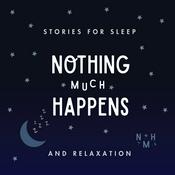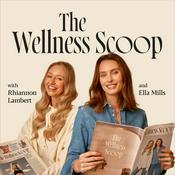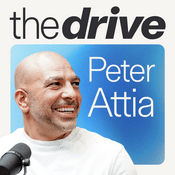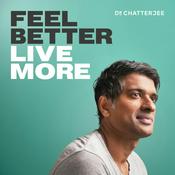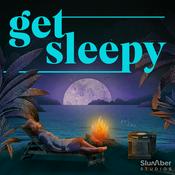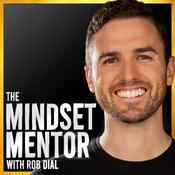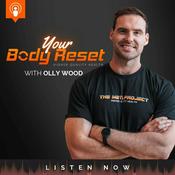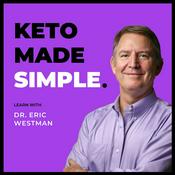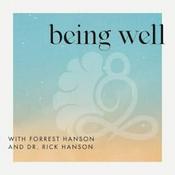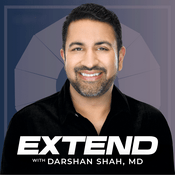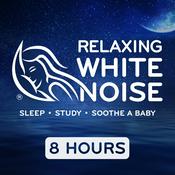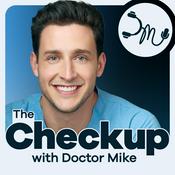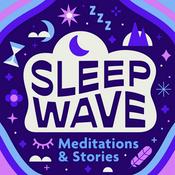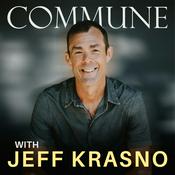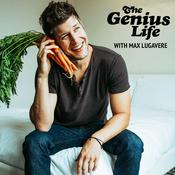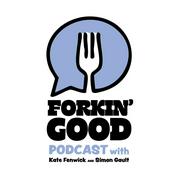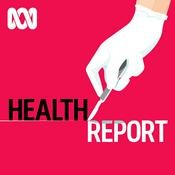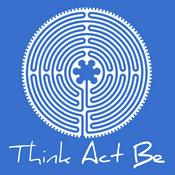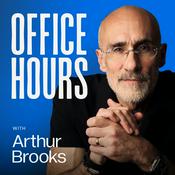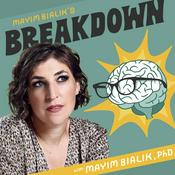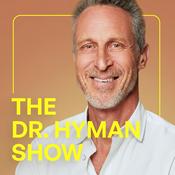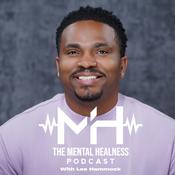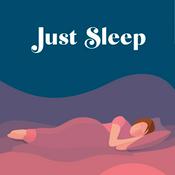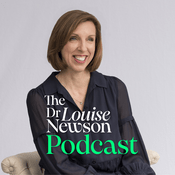61 episodes
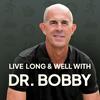
#59: The Great Cold Remedy Audit: What Actually Works
06/1/2026 | 15 mins.
Send us a textSummary: I separate cold-season fact from folklore so you know what truly prevents colds, what (slightly) shortens them, what eases symptoms—and what to skip. Save money, feel better, and keep it simple.What we coverHow common colds are and how long they last (2–3 per year on average; usually 5–7 days; cough can linger).Prevention audit: Vitamin C doesn’t prevent colds in the general population (Cochrane), though it helped in physically stressed groups; handwashing probably helps (Cochrane) echinacea doesn’t pan out (Cochrane) garlic didn’t reduce colds but modestly reduced severity in one RCT (trial) gargling showed a very small signal (trial)Grandma’s wisdom check: Short sleep (<6 hours) quadrupled cold risk in a viral-challenge study (study) cold exposure might matter (foot-chilling RCT: more colds in the chilled group, studylab data suggest colder noses weaken first-line defenses (mechanism)Shortening a cold: Vitamin C doesn’t shorten it when started after symptoms (Cochranezinc lozenges can trim 1–2 days if started within 24 hours (≈100 mg/day elemental zinc in trials, meta-analysischicken soup has plausible lab effects on white blood cells (studySymptom relief: Oral phenylephrine doesn’t work; the FDA voted 16–0 that it’s ineffective (FDA reviewPseudoephedrine (the “real” Sudafed, behind the pharmacy counter) reduces congestion with meaningful effect sizes (evidenceHoney 30 minutes before bed improved cough and sleep in kids (not for <1 year) and is supported by a broader review (RCTsystematic review Humidifiers didn’t show clear benefit in trials (CochraneVoice myth: Whispering actually stresses the vocal cords more for many people—so speak softly instead (studyFlu vs. cold: Tamiflu is only for influenza and must be started within ~48 hours.TakeawaysTo avoid colds: prioritize sleep and handwashing; keeping warm may help.To shorten a cold: consider zinc (start early). Chicken sou

#58 The Great Hepatitis B Vaccine Controversy: What Does A Balanced View Reveal?
16/12/2025 | 15 mins.
Send us a textSign up for free newsletter hereSummary: I walk you through the proposed shift away from universal newborn hepatitis B vaccination at birth, why it matters, what the evidence shows, and how parents can make a calm, informed choice—without reigniting every vaccine debate.Episode highlightsI explain why hepatitis B is uniquely risky for babies: if infected early, up to 90% develop lifelong infection with later risks of cirrhosis and liver cancer. I also clarify that exposures aren’t only from mom at delivery—household contact and tiny blood exposures matter.We review what happened after the U.S. moved to a universal newborn dose in 1991: childhood hepatitis B plunged dramatically, with no new safety concerns emerging from hundreds of millions of doses.I outline the new proposal: keep the birth dose for babies of mothers who are positive or whose status is unknown; consider delaying to two months when mom tests negative—via shared decision-making with the pediatrician.I describe why many pediatric and public health experts still favor the birth dose: it protects against documentation errors and early exposures, and it avoids added “friction” that can reduce on-time vaccination.I address autism concerns with empathy and evidence: large studies and reviews have not found a link between vaccines—including hepatitis B—and autism.My take: I would keep the universal birth dose because it’s safe, simple, and highly effective. But if parents delay, they should commit to the 2-month visit and rely on their clinician—not social media.Key takeawaysThe risk window is small but meaningful. Early-life infection can have lifelong consequences; the birth dose is a safety net.Process vs. evidence matters. Policy shifts should be driven by strong data, not ideology or committee turnover.If you delay, have a plan. Put the two-month appointment on the calendar now and follow through.Know your status. Make sure maternal hepatitis B testing is done and documented correctly.Resources mentioned (for deeper reading)Hepatitis B clinical overview and long-term risks (CDC): cdc.gov/hepatitis-b/hcp/clinical-overviewU.S. policy history and early childhood burden pre-1991: PubMed 11694691Impact of infant hepatitis B vaccination (MMWR): mmwrhtml/mm5125a3.htmCTA: If this episode helped, share it with an expecting parent or grandparent. To get my weekly note on practical, evidence-supported longevity and preventive health, join me at DrBobbyLiveLongAndWell.com.

#57 Microplastics: potential problem with no easy solution
11/12/2025 | 26 mins.
Send us a textSummary: Microplastics are showing up in our water, food, air—and in human tissues. In this episode, I unpack what the best studies actually show (and don’t), why risk is plausible but not proven, and the realistic steps you can take today without panic. In this episode, I cover:What microplastics are and why they’re everywhere—from packaging and clothing to tire dust—and why production is still projected to rise ~70% by 2040 (OECD). OECD+2OECD+2The signal that caught my attention: patients with microplastics in carotid artery plaque had a markedly higher 3-year risk of heart attack, stroke, or death (NEJM). Association, not proof—but concerning. The Guardian+3New England Journal of Medicine+3PubMed+3What’s turning up in the brain: autopsy work suggests rising microplastic loads in brain tissue, though causality remains unknown (Nature Medicine coverage). Nature+2Nature+2Everyday exposure: a liter of bottled water can contain ~240,000 plastic particles—mostly nanoplastics—using newer detection methods (NIH Research Matters). TIME+3National Institutes of Health (NIH)+3NCBI+3Indoor vs. outdoor air: estimates suggest we inhale tens of thousands of microplastic particles daily, with higher indoor concentrations (PLOS One). PLOS+1My takeaways for you (progress, not perfection):Respect the signal without catastrophizing. Human data are early, but cardiovascular and neurologic signals merit attention. New England Journal of Medicine+1Make the easy swaps: store food in glass, don’t microwave plastic, favor loose-leaf tea over plastic-based tea bags, and replace plastic cutting boards with wood or glass. (These trim exposure; they don’t eliminate it.) Air matters: consider a HEPA purifier for main living/sleeping areas and vacuum regularly; natural-fiber clothing sheds fewer synthetic particles. Water choices: where safe, use tap water with a quality home filter and a reusable (non-plastic) bottle—especially given the nanoplastic findings in some bottled waters. National Institutes of Health (NIH)Listener corner: You asked for more quick-hit myth busters (yes, we’ll do “Does chicken soup speed recovery?”), and thanks for the reminder to wear a

#56 Change exercise as you age?
02/12/2025 | 32 mins.
Send us a textExercise is the most powerful longevity tool we have, but after 50 the recovery curve, injury risk, and bone/muscle changes mean the smartest plan blends strength, power, impact, and slightly more recovery—so you can train hard without derailing progress.What we coverWhy this matters now: record-setting older endurance athletes (and I’m racing at 69) show what’s possible—if we train wisely.The “aging triad”: loss of muscle (especially fast-twitch/power), bone density shifts (sharpest around menopause), and rising osteoarthritis risk.The injury paradox: the fitter you are, the more a single layoff can cost; preventing setbacks is a longevity strategy.A practical framework: build strength, protect fast-twitch fibers, add tolerable impact for bone, and consider an extra rest day after hard sessions.Evidence, in plain English (linked)Muscle changes: We preferentially lose type-2 (power) fibers with age; quads are especially affected. Training can target this. Review.Women & men both lose muscle mass percentage-wise; patterns differ but loss is universal. Same review.Bone density: Women can lose ~2–3%/yr at the spine around menopause; men decline more gradually. CDC data brief.Running & knees: Long-term cohorts show no higher knee OA in runners vs. non-runners (Stanford cohort; systematic review, ~14k people), and even runners with established OA didn’t worsen—and reported less pain. Prospective OA cohort.Strength at any age: Even adults 85+ can add ~10% quad size and ~40% leg strength in 12 weeks; heavy strength work is safe when programmed well. Overview.Power/fast-twitch support: Short (30–120 s) high-intensity efforts and plyometrics can improve type-2 fiber function and neuromuscular drive in older adults. Narrative review.Bones respond to signal: In 80 trials (5,500 postmenopausal women), combined resistance + impact training improved spine and hip BMD regardless of menopause timing or baseline status. Meta-analysis.Recovery with age: Some data show more soreness and temporarily lower strength 24–72h post-lifting in middle-aged vs. young adults—supporting a touch more recovery after hard days. Study.Practical takeawaysLift twice weeklyAdd brief power: 20–30-second hard intervals or controlled mini-hops/step-downs; keep impact tolerable.Build bones: pair resistance work with impact (jog/jump rope as tolerated). If you have osteopenia/osteoporosis, get your plan cleared first.Recover like it matters: if a session is truly hard, consider one extra easy/recovery day.Audit risk: dial back higher-risk activities that would sideline you for weeks; prevention preserves gains.If this episode helped, please rate the show and share it with a friend. To get my newsletter with practical, evidence-backed steps for living long and well, visit DrBobbyLiveLongandWell.com.

#55 The 5" food rule: safe to eat? Or misguided?
18/11/2025 | 17 mins.
Send us a textBe honest—have you ever rescued a French fry from the floor? In this bite-size myth episode, I test the famous “5-second rule.” I walk through what actually transfers to your food (fast), when that matters, and why a little microbial exposure isn’t always the villain—while drawing a hard line for high-risk settings and situations.Key Topics & TakeawaysThe verdict meter: The 5-second rule is false—bacteria can transfer in <1 second. In a Rutgers lab study, juicy foods like watermelon picked up the most, gummies the least; tile/steel transferred more than carpet (Applied and Environmental Microbiology / PubMed).Foodborne illness is common: ~48M illnesses/year in the U.S., ~128k hospitalizations, ~3k deaths. Usual suspects include Salmonella, E. coli, Campylobacter, Listeria, and norovirus. Symptoms are typically GI, but severe cases occur—especially in the very young, elderly, pregnant, or immunocompromised (CDC overview).Context matters: Moisture and surface trump “time.” High-moisture foods collect more microbes; visibly dirty or high-traffic floors (think convenience stores) raise risk—regardless of seconds.When to skip the floor food—no debate: If you’re immunocompromised, pregnant, very young/elderly, or you’re in a hospital/clinical setting, don’t eat it. Full stop.Nuance: Are microbes always bad? Early, diverse exposure to benign environmental microbes associates with more resilient immunity. Farm-exposed kids had lower asthma/atopy rates (≈20–40%) versus city peers (NEJM). Greening urban daycare yards (adding soil/plant matter) increased skin/gut microbial diversity and shifted immune markers in a favorable direction (Science Advances). This doesn’t mean “eat off the floor”—it means the bigger story is about exposure diversity and context.My practice: At home, I don’t stress over a quick drop on a clean surface; out in public or medical settings, I pass.Bottom Line Microbes hop on fast; the “rule” doesn’t save you. But danger depends on what fell, where, and who is eating it. Be smart, especially if you or your environment are higher risk.Call to Action What health saying should I myth-test next? Text me your favorites (include your email so I can reply), and please rate the show on Apple/Spotify. Want my newsletter on practical, science-backed longevity? Join me at DrBobbyLiveLongAndWell.com.
More Health & Wellness podcasts
Trending Health & Wellness podcasts
About Live Long and Well with Dr. Bobby
Listen to Live Long and Well with Dr. Bobby, Nothing much happens: bedtime stories to help you sleep and many other podcasts from around the world with the radio.net app

Get the free radio.net app
- Stations and podcasts to bookmark
- Stream via Wi-Fi or Bluetooth
- Supports Carplay & Android Auto
- Many other app features
Get the free radio.net app
- Stations and podcasts to bookmark
- Stream via Wi-Fi or Bluetooth
- Supports Carplay & Android Auto
- Many other app features


Live Long and Well with Dr. Bobby
download the app,
start listening.
